How is COVID-19 Impacting Hospice Care?
America is still in the early phases of the novel coronavirus spread, and the full effect is impossible to predict. Different regions of our nation are already experiencing different degrees of impact, much of it influenced by population density.
There’s one trend Transcend Strategy Group is starting to see. A growing number of our hospice clients are getting a surge in referrals from a range of healthcare professionals – hospitals, physicians and skilled nursing centers.
We believe multiple factors are at work here:
- With a national emphasis on self-isolation, families want their loved ones to be at home. A preference for home-based hospice and palliative care (and home health, for that matter) seems to be on the rise.
- As confirmed cases of COVID-19 increase, hospitals need beds, especially in ICUs. Discharge planners may be more willing than ever to coordinate discharges of appropriate patients to home-based hospice and palliative care.
- Skilled nursing centers, assisted living communities and hospitals all are facing workforce challenges like most other businesses. With staff members juggling to deal with kids home from school and other demands of self-isolation, providers may be finding themselves short-staffed and looking for the support of expert hospice and palliative care providers.
What are you experiencing in your community? Are your admissions already growing? And, if so, how can you be best prepared for higher, possibly more acute, patient volumes?
- Make sure your staff is fully prepared. Many healthcare providers responded quickly with public “responsibility statements” promoting what their team is doing for the safety of patients, families and their staff. Some changes in policies and procedures were quickly set in motion, with staff members being trained to take extra precautions against exposure to COVID-19. Beyond clinical measures, however, it’s unclear if or how providers are training staff in communications about actions during the pandemic. It’s vital to create three to five key messages, share them with all employees and volunteers, and give guidance on how each team member delivers those messages consistently in your community. In addition, prepare your staff with your expectations of them as circumstances unfold. Clients are reporting increased workloads and higher stress, especially on those directly providing care. Communicate with staff frequently about changes to help them and to let them know you realize they’re doing all they can – delivered with a large dose of appreciation.
- Inform all referral sources immediately of any changes in policies or procedures. This may seem like a no-brainer. But actions and reactions are evolving quickly as the number of confirmed COVID-19 cases continues to grow … and keeping your audiences informed of the details can be a real challenge. For instance, our clients are reporting that some families are refusing to let home-care providers into the house for fear of exposure. Yet, their loved one needs care. How do you respond to such a situation? Can you be more proactive to prevent or lessen these reactions? Do you collaborate with the patient’s referrer to find a solution? If a change in activities causes you to change your policies, procedures or timing for admissions or providing care, have a plan in place to disseminate the new information to all impacted audiences as quickly as possible. Are you communicating with your referral audiences on a daily basis at least by email to keep them apprised of changes? Communication breeds trust … a trait everyone is hungry for these days.
- Communicate and manage expectations so you can still deliver as promised. Americans are quickly getting used to limitations being set due to COVID-19. The most important factor is to clearly communicate changes and the “new rules” as they happen. Details are important for managing expectations, and those expectations can affect your performance scores down the road. For example, one of the categories for CAHPS scores and Hospice Compare is “Getting timely help,” which is also already one of the lower performing scores for providers nationally. “Timely” is such a subjective word! If you ask families what their expectations are for response times – and you clearly communicate what you’re capable of delivering during this crisis – you can help manage perceptions of how you performed.
Do you need more help with communication strategies and messaging during the pandemic? Transcend Strategy Group is offering free crisis management advice and counsel to senior care providers. To learn more, contact Stan Massey at [email protected] or Stephanie Johnston at [email protected].










